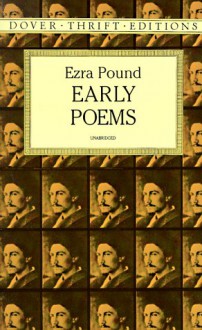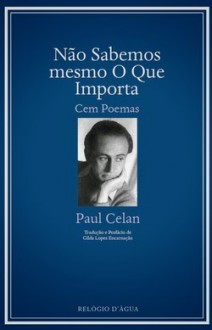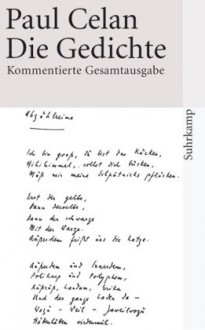
Disclaimer: I received an advance reader's copy (ARC - Uncorrected Manuscript Proof) of this book from NetGalley in exchange for my honest review. All opinions expressed are my own, and no monetary compensation was received for this review.
(The book is due to be published on May 12, 2015; review written 10/04/2015)
Contents (in bold typeface):
Deus Ex Homine
The Server and the Dragon: “These days, the nerd rapture is like the flu: you can catch it. The godplague is a volition-bonding, recursively self-improving and self-replicating program.” Narrative taking place in the span of millennia and feeling like a dream-quest. My favourite story.
Tyche and the Ants
The Haunting of Apollo A7LB: “The moon suit came back to Hazel the same night Pete was buried at sea.”
His Master's Voice: “Before the concert, we steal the master’s head.”
Elegy for a Young Elk: “No point in being a poet: they had already written all the poems in the world, up there, in the sky. They probably had poetry gardens. Or places where you could become words. But that was not the point. [ ] Bright words from dark matter, that’s what poetry was about. When it worked.”
The Jugaad Cathedral: “They did something right when they made her, up there. [ ] She lives in many worlds at once, thinks in qubits. And this is the world where she wants to be. With me.”
Fisher of Men: “The summerhouse was his, his alone. He hadn’t built it, of course, but the vision was his. He had built a 3D version of it out in Second Life.”
Invisible Planets: “In the lives of darkships, as in the journeys of any ambassador, there always comes a time that is filled with doubt. As the dark matter neutralinos annihilate each other in its hungry Chown drive heart and push it ever closer to the speed of light, the darkship wonders if it truly carries a cargo worthy of the Network and the Controller.” À la Italo Calvino, Rajaniemi follows the concept of a dialogue between two entities, but in his story the characters are spaceship with embedded AI. Their dialogue is centered around inhabitants of various planets, leading to a reflection on society. This is another fine example of providing backstory without infodumping (there’s a passing mention of a much known and central theorem in the field of Quantum Physics, though it isn’t called by its own name in the story; can you name it? Hint: it has to do with Teleportation…).
Topsight: “The night before Kuovi was supposed to fly home, the four of them went to bring back Bibi’s soul.”
Ghost Dogs
The Viper Blanket
The Oldest Game
Shibuya no Love: “They were eating takaoyaki by the statue of Hachiko the dog when Norie told her to buy a quantum lovegety. [ ] A what? , she managed to ask. [ ] You don’t have them in Finland? How do you meet boys there? Oh, I forgot, you have the sauna!”
Paris, in Love
Satan's Typist: “Tap tap tap tap tap, said the typewriter.”
Skywalker of Earth: “Twelve hours before the rain of ships. I am four years old and
wearing my best dress. The last man on the moon is on TV. He moves in slow, deliberate bounds and leaps next to a long-legged spidery craft wrapped in tin foil.”
Snow White Is Dead, where Rajaniemi explores the concept of Neurofiction in fiction in general and in SF in particular: “[ ] we just wanted to look at what happens in a reader’s brain when they read SF. For example, it turns out that the experience of insight has a very distinct brain wave signal, and I was curious to see if we could deliberately evoke it in a reader.” (Appropriate Scala source code in here for us to play with).
Another wonderful excerpt from the “Snow White is Dead”: “I am everything you could ever want. I am everything that you can’t buy, you who sit there in your white coat, with your slicked-back hair and Biarritz tan and expensive watch and a faint smell of pine in your aftershave. I am life. I am innocence. I am fragile. I am sweet. I am the thing you made, from chemicals and electric dreams.”
Unused Tomorrows and Other Stories, where Rajaniemi explores the concept and praxis of Microfiction: “Writing microfiction is the ultimate challenge to a writer’s craft. It requires cutting away everything unnecessary, leaving only a sharp, singular image that the reader can grow into a story on their own.” A wonderful example of this so-called microfiction extracted from this segment: “Parallel world: [The movie] 'It’s a Wonderful Life' never gets made. Christmas becomes the suicide season. It rains wingless angels.”For me this epitomizes what Rajaniemi’s fiction is all about. He aims at pruning his writing of everything superfluous, giving the reader (almost) total freedom to make up his or her own story.
I've read some of Rajaniemi's short fiction (he's popped up in Gardner Dozois' yearly collection on a couple of occasions in the past few years), but reading him in one go is something entirely different.
Rajaniemi’s fiction supports my firm belief that SF is at its best when it uncompromisingly tosses the reader into unfamiliar vocabulary and settings, then slowly giving out clues to understand it. At times, the barrage of intense vocabulary begins to sound like Celan’s poetry (vide several of examples above).
When reading Rajaniemi we’re in another “country”. His fictiopn is everything but traditional, e.g., genre-clichéd. What we’ve got here are complexly stories where even minor details are significant (in a Rajaniemi story one can expect lots of details). Don’t expect infodumps à lá Neal Stephenson, i.e., Rajaniemi rarely breaks stride to explain his science or world (or words come to that). That is actually one of his great strengths. Rajaniemi might introduce a concept such as “quantum lovegety” (a quantum Tinder App with much more explicit undertones) but allow the rationale to disentangle through the actions and dialogue of the characters. Rajaniemi may use a term like “quantum lovegety” over and over again but not explain it clearly until much later in the story (and sometimes never).
It is a pretty good way to build a story that adds another strata of mystery to something already mysterious, and thus preventing infodumping so common to SF. Some people will hate as a matter of course. Why? Probably because they get confused (as I am sometimes). SF and Rajaniemi’s fiction in particular impart a sense of glamour, otherness, and estrangement. Don’t expect a Rajaniemi story to include a glossary of terms.
Technically I’m always on the look-out for writers able to (ably) write in a language other than their own. Rajaniemi is one of those writers. His English is literate, and insightful. Drawing a parallel with myself, I’m bilingual, but I’m unable to write fiction (and Reviews, for that matter) in Portuguese. I consider myself to be an outgoing guy English-language-wise. Portuguese-wise I’m more introverted…
Due to the fact that it’s a potpourri collection of fiction, some unevenness in the quality of some of the stories is to be expected. Nevertheless the best stories are up there with the best. This collection did not push all of my buttons, but rather pushed all the right ones.
When reading Rajaniemi you’re on your own. Have a nice voyage.
NB: My own attempt at writing microfiction (go easy on me…):
Jagged pieces of light stream throughout the computer store front window, creeping under the doorways. They had to dodge the impact. Of light that sparks up when there’s too much avoidance. It caroms off the shelves, past the sidewalk, and landing right on a purple tiled floor. It disappears at last. Darkly with a mind that is now made up. It oozes into the color like the purple of poppy ripping. Congruous. Pieced together until it fits perfectly.
(Based on the ideas and prose by Hannu Rajaniemi. I'm sure he'd agree that it makes you think about what comes next in the story).
SF = Speculative Fiction

 Log in with Facebook
Log in with Facebook 


















